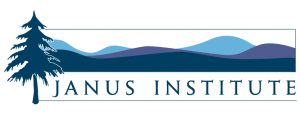All too often residents tend to focus on the negative aspects of their communities while taking for granted the positive aspects. This is understandable and really a part of human nature – poor roads leading to chronic traffic jams are certainly more likely to get one’s attention than low housing costs. The central message of the book is that to achieve prosperity communities need to first become “prosperous-ready” through community development, and then strengthen (or reboot) their local economies through economic development. All communities have challenges and liabilities, but they also have advantages and assets to build on. Griping about community problems and adopting a “woe is me” attitude is self-defeating. Improvement occurs when communities start to build on the assets they have and create more assets through community development.
Colquitt, Georgia and its Swamp Gravy story in the book Introduction is a prime example of a community using an asset to spur economic development. The community’s heritage – a less obvious but nonetheless powerful asset – was utilized to create a local theater production that went national and spawned an Institute helping other communities replicate Colquitt’s formula for success. Identifying and inventorying (or “mapping”) a community’s assets is accomplished through external and internal evaluations discussed below.
External Evaluations
When making major decisions in our lives such as buying a house or making an investment we often seek the opinion of others. We might ask friends or family members with expertise in real estate or finance for their views before making a decision. This advice from external sources can greatly augment what we know (or think we know) about a situation (internal source) and help us make a better decision. So it is with communities. Residents have internal knowledge of their communities and they often accentuate the positive or the negative because they live it. An outside perspective can help residents attain a more balanced view of their community. Two ways to get this outside perspective are:
1. Statistical profiles. As mentioned in Chapter 2, a community might think it has a strong economy because local businesses are doing well and unemployment is low, but what if the community’s businesses are in “sunset” industries that are declining nationally? An older model cell phone might still work well, but when the manufacturer stops supporting it or a new cellular technology is adapted it is worthless. Monitoring trends and scanning for future opportunities and threats can help communities avoid economic disruptions and become more prosperous. A statistical profile or a community can include:
- Economic data such as employment by industry and category; per capita or average household income; average salary or wage levels; income distribution and many other variables.
- Social data such as current population and its composition by race, age, education and other measures; home ownership; crime; health and healthcare and other measures.
- Quality of life data such as housing affordability; arts, cultural and recreational opportunities; and other measures.
There are three ways to use statistical profiles:
- Obtain a snapshot of where the community stands currently on these measurements
- Identify recent trends in these measurements, which helps identify community progress or, conversely, problems or issues
- Create a comparison with other communities, the state or nation.
Today, community data is readily available online, and it is inexpensive or free from government agencies such as the Census Bureau, US Department of Commerce and the US Bureau of Labor Statistics. Private firms such as City-data.com offer free community profiles and data online, and firms such as EMSI offer data subscription services and in-depth statistical analysis of communities. Statistical profiles can be maintained and regularly updated for use on a community’s website – a standard and important practice for marketing a community for external investment. Statistical profiles of Tupelo/Lee County, Mississippi, included in the book as an example of a prosperous community, can be found on their website. Most communities also post statistics and community profiles on their website, so just search for “economic development” and whatever community you are interested in to find them.
2. Outside agencies or organizations. Data doesn’t tell the whole story of a community. As in the example above of buying a new house or making an investment, external and hopefully unbiased opinions of a community can complete the picture. When performing community audits or studies, the authors always interview outside agencies to get their perspective, especially the ones that deal with multiple communities and can put the subject community in perspective. Regional or state economic development departments are great sources for identifying the strengths and weaknesses of communities since they try to promote them as good business locations for outside investment.
Internal Evaluations
As discussed above, while residents can often have biased opinions (positive or negative) about the characteristics of their community, they also have “insider” knowledge. When evaluating communities, the authors rely heavily on the experiences and observations of community residents from all walks of life. For example, we have found that confidential interviews with business owners and managers can extract a wealth of information on the strengths and weaknesses of a community as a business location. Business owners and managers, elected officials, and any and all stakeholders can provide a wealth of information on all aspects of a community in one-on-one confidential interviews. There are many other ways to solicit internal evaluations and opinions including public “town hall” meetings, focus groups and surveys. Care must be taken to ensure that input is obtained from a representative sample of community residents, and that all residents are given an opportunity to express their opinions. This not only helps ensure an accurate picture of a community, it also avoids pushback from residents who might think “they didn’t ask me for my opinion!” Of course surveys and interview questions should be tailored to the specific needs and objectives and a particular community. Examples of community surveys can be found on the internet; here is a link to one example.
Asset mapping exercises as described above are often part of a larger effort of a complete community SWOT analysis (strengths, weaknesses, opportunities and threats) or a community visioning exercise (see Tool ). These, in turn, are often a part of a total community visioning and strategic planning effort.
![2021 Prosperous Places Logo [TM]](https://www.prosperousplaces.org/wp-content/uploads/2021/02/20210205_JI_PPTM-Logo.png)



